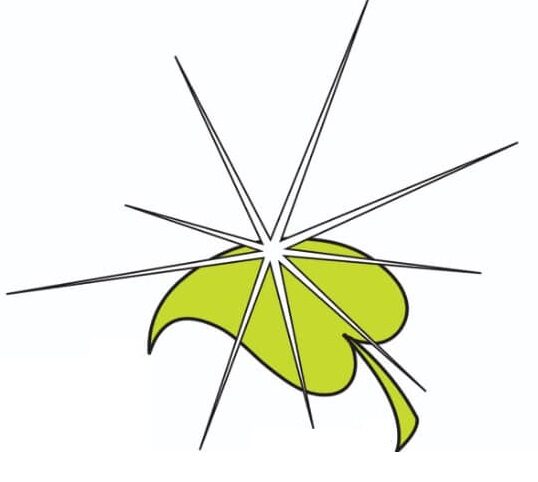Saponins:
Compilation and arrangement: Engineer Javidi
Saponins:……………………………………………..
Saponin is derived from the Latin word sapo, which means soap.
Glycosidic compounds with high molecular weight, these molecules have two arms, one arm with a lipophilic aglycone (healing property), of course, this arm is made of triterpenoids or steroids, and the other arm has a hydrophilic sugar. Active, it is activated in water and gives a colloidal solution next to cholesterol and causes cholesterol deposition. These compounds have a low surface tension and act as a saponifier (detergent) on the skin membrane, and in plants it reduces surface tension (increases osmotic pressure).
Saponin injection:………………………………………
– By injecting saponins into the vein, they destroy the membrane and lead to hemolysis and the release of hemoglobin. So injecting saponins has a lethal risk.
Eating saponins:
– When saponins are taken orally, they are poorly absorbed in the intestine and only those that are absorbed are absorbed as aglycones. Also, bacteria are also effective on them, that’s why their toxicity is greatly reduced when taken orally.
Saponins are more common in the Labiate family.
The main properties of saponins:………………………….
Disinfectant and antibacterial – antioxidant and anticancer – helping to treat diabetes – helping to lose weight and burning fat – increasing the body’s immune system – reducing blood LDL levels – precursor of sex hormones – increasing vitamin D production
Disadvantages of saponins……………………………….:
In some people, they create hemolytic anemia.
Classification of saponins according to the type of aglycone:
– Triterpenoid saponins:
Saponins that have an aglycone, triterpenoid arm (5 carbon rings).
– Glycyrrhetic acid found in licorice root
Ginsenoside in ginseng
Jujuboside in jujube fruit
-Saponarin in Ghasol plant
Tarasaponin, elastoside found in Aralia Elata plant
-Saikosaponin found in the root of Falactum umbrella wheat plant
Oleanolic acid in thyme and marjoram
– Steroidal saponins:
– Saponins that have an aglycone, a steroid (27 carbon) arm. – This type of saponin has estrogenic properties and is used (precursor of sex hormones-increasing vitamin D production).
– Steroidal saponins are present in some dark plants of lily, amaryllis and other genera.
-Diosgenin or Diosgenin and Hesogenin found in fenugreek plant and wild yam plant (Dioscorea villosa)
–Plants with steroidal saponins such as:
Tribulus terrestris- Ruscus aculeatus-Aloe Vera-Cedar leaves-Asparagus-False unicorn- and…
– Steroidal saponins with glycoalkaloid subgroup (aglycon has steroidal alkaloid), such as Solanaceae A family (a medicinal plant that has a laxative state).
Classification of saponins through their properties:
1). Herbal expectorants:
Expectorant saponins enter the bloodstream and finally enter the alveoli of the lungs, mix with thick phlegm and dilute it and remove it from the alveoli.
Plants such as: hyssop, licorice, thyme, primrose flower, violet flower, cheese flower, galga, gypsy rose, horsetail, xerofon, etc. have this type of saponin.
2). Cicosaponins:
– Precursor of steroid hormones – strong anti-inflammatory – anti-hepatoxic (anti-liver toxicity)
Such as: frankincense gum (basilic acid) – ginseng (ginsenoside) – ginkgolobia (ginkogolide) – alfalfa – Bupleurum falcatum- and..
3). Saponins with sterol form:
– They have a structure similar to phytosterols and lower blood fat, such as: soybeans, spinach, tomatoes, asparagus, etc.
4).. Saponins that kill fungi and molluscs:
Plants with these types of saponins:
Hedra plant (Hedrin) – Thyme – field bindweed (lablab) – Hanzal – Marznjoosh and….
5).Saponins with industrial uses:
Saponins that are used in industry, as cleaning industrial equipment and diluting products, as a powerful emulsion of resins and fats and fixed oils, as well as use in shampooing and health industries, etc.
Commercial saponins are extracted from yucca and Quillaja plants (Quillaja Saponaria and Saponaria officinalis).
Classification of saponins in terms of how aglycans are linked with the sugar part:
1). Monodesmosidic: a sugar group is linked by a hydroxyl group.
2).Bidismosidic: one sugar group is linked by two hydroxyl groups.
Good luck. JAVIDI…
,Javidi,Engineer Javidi,Javidi Medicine,Zarin Ghata Pars,Reza Javidi,Phyto Chemistry,Plant Chemistry,Chemistry of Medicinal Plants,Saponin,Properties of Saponin,Types of Saponin,Definition of Saponin,What is Saponin,Eating Saponin,Saponin Injection,Saponin in Blood,Properties Saponin,harms of saponin,reduction of LDL,sex hormone precursor,strong anti-inflammatory,saponifier,saponifier,triterpenoid saponin,triterpenoid saponins,steroidalsaponin,steroidal saponins,glycyrrhetic acid,glycysic acid,ginsenoside,jojoboside,jojoboside,licorice root,ginseng, jujube,ghasol,ghasol,soapy,tarasaponin,saponarin,sicosaponin,sicosaponin,oleanolic acid,elastoside,elastoside,wheat umbrella,frankincense,diosgenin,diosgenin,hesogenin,fenugreek,devil’s torch plant,dios ganin, St.John’s wort,alfalfa, bosulic acid,cole khas,aloe vera,cedar,horseradish,gylcoalkaloid,commercial,expectorant,herbal expectorant,herbal anti-headache,anti-phlegm,hyssop,primrose,galga,violet flower,Ginkgo biloba,Ginkgo biloba,Ginkgo globia,Chamomile,Soybean,Horseradish,Cedar,Tomato,Commercial,Antifungal, Antibacterial,Reduces blood fat,Hedra,Hedrin,Iblab,desert ivy,hanzel,commercial saponin,industrial saponin,yucca plant,Kilaya plant,shampooing,monodesmosidic saponin,non-desmosidic saponin,Ruscus aculeatus,Tribulus terrestris,Bupleurum falcatum,Seidlitzia rosmarinus
